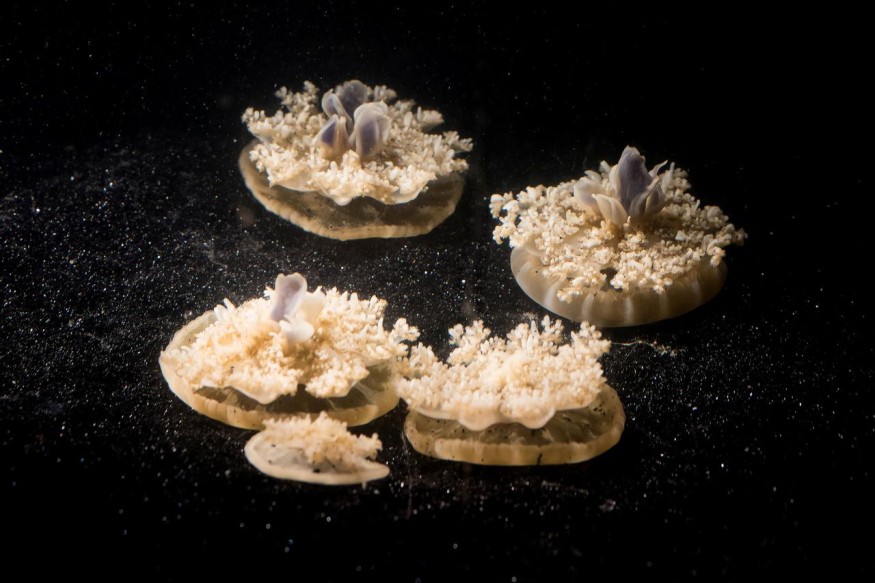New Species of Jellyfish Can Sting Without Touching

The Jellyfish can be one of the most harmful sea creatures in the world. People who love to swim and dive normally avoid this species as they have been known to cause serious health problems.
Jellyfish stings vary in strength and effect. Some stings cause simple redness, irritated skin, and pain. However, others have been known to cause illness. Sometimes these stings are fatal.
It is also a common assumption of divers and swimmers that jellyfish can only sting a person when they have been touched. That isn't so true anymore.
In a new study published in Communications Biology on Thursday, it was found that there is actually a species of Jellyfish that can harm a swimmer or a diver without touching it. The Jellyfish whas been named the upside-down jellyfish due to the way they position themselves belly-up on the ocean floor.
National Geographic reports that they have been studying these jellyfish for more than a century. However, over the past few decades, no one could determine ut how these upside-down Jellyfish manage to harm people from a distance.
Cheryl Ames, a co-lead author of the new study and Marine Biologist from the Smithsonian National Museum of National History, said that they knew that this Jellyfish has something to do with the animal's mucus. They found that this upside-down Jellyfish can produce tons of sticky mucus that traps small prey. The researchers compare it to how a spider uses its web to catch prey. They also found that the fish quicky perish in the slime of the Jellyfish.
The most interesting part of their discovery is that this type of Jellyfish can cause a person to experience what is known as "stinging water sensation" most especially if a diver's skin is exposed. This was also supported by a series of laboratory tests where they found that this doesn't only cause a diver to feel itchy and burning skin, but can also be very harmful if the ecposure is prolonged.
Ames said that what they found swimming inside the slime of the jellyfish was autonomous and they termed the structures cassiosomes. She said: "They move around like little Roomba vacuums and bumping into the brine shrimp that we fed them, just killing them on contact, and moving on to the next."
The researchers first believed that the structures they found might be parasites. However, when they used new technologies to determine exactly what is in the structures through the jellyfish's DNA they discovered its true origin. They found that the structures present in upside-down Jellyfish are a type of algae, a common feature in other Jellyfish.
Anna Klompen, a co-lead author of the study and a Jellyfish Biologist, said that they don't know what the algae were doing inside the cassiosomes. Ames also said: "But we haven't been able to confirm that with the techniques used so far," she is referring to the algae that may act like solar-powered battery packs.
The researchers also added that more research is needed to determine if these cassiosomes can sense prey and move towards them. "I don't know if they can seek but they can destroy," Klompen said.
A Biochemist and Jellyfish expert from the University of Hawaii, Angel Yanagihara, said that the discovery could help answer long-standing questions about stinging water sensation. Though, Yanagihara is not part of the study he still said: "The pat explanation that the mucus was just in and of itself somehow an allergen or allergenic didn't seem credible to me. So this is quite satisfying to see such an elaborate description and breakdown of exactly what they're releasing into the water."
Subscribe to Latin Post!
Sign up for our free newsletter for the Latest coverage!
© 2025 Latin Post. All rights reserved. Do not reproduce without permission.












